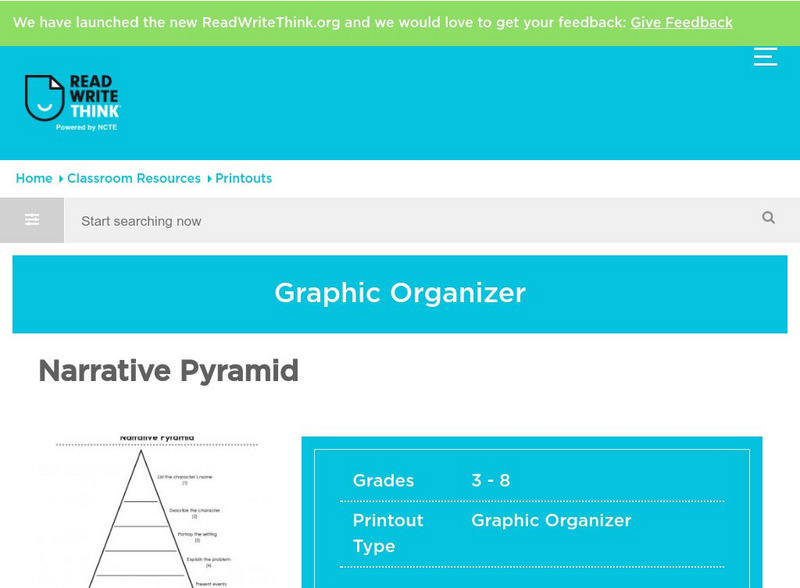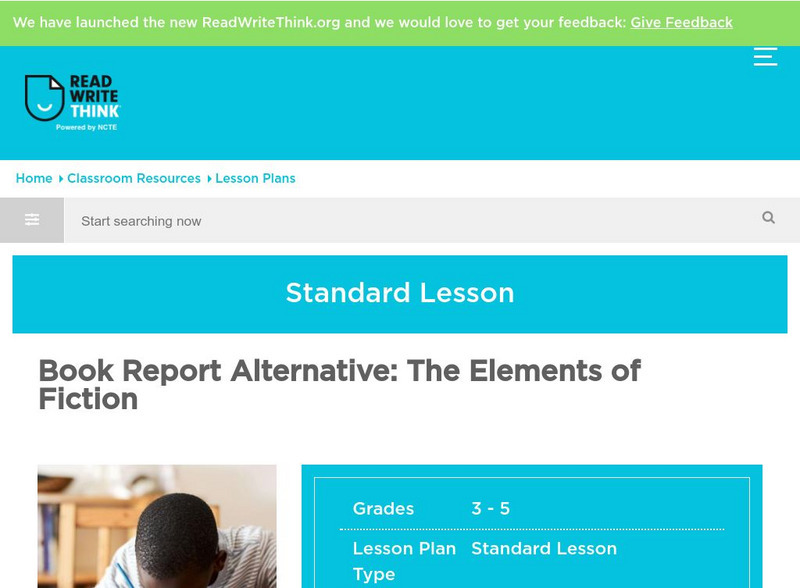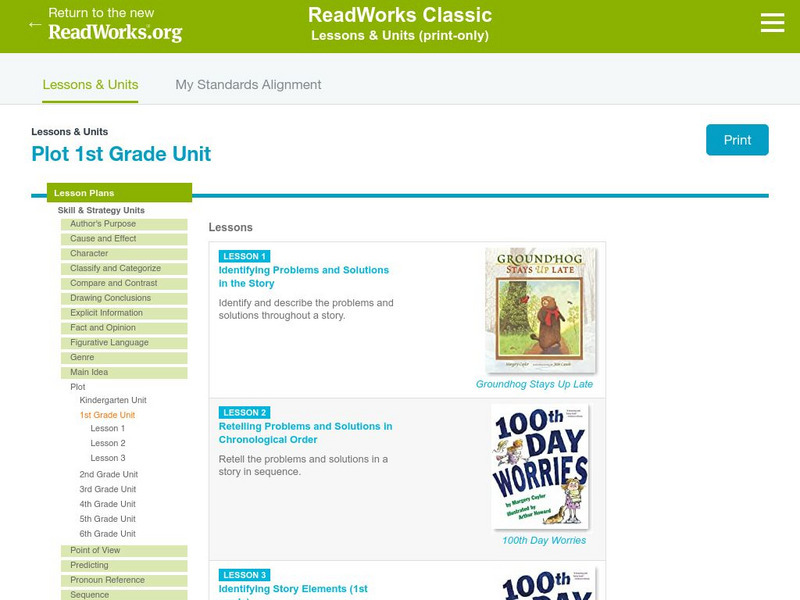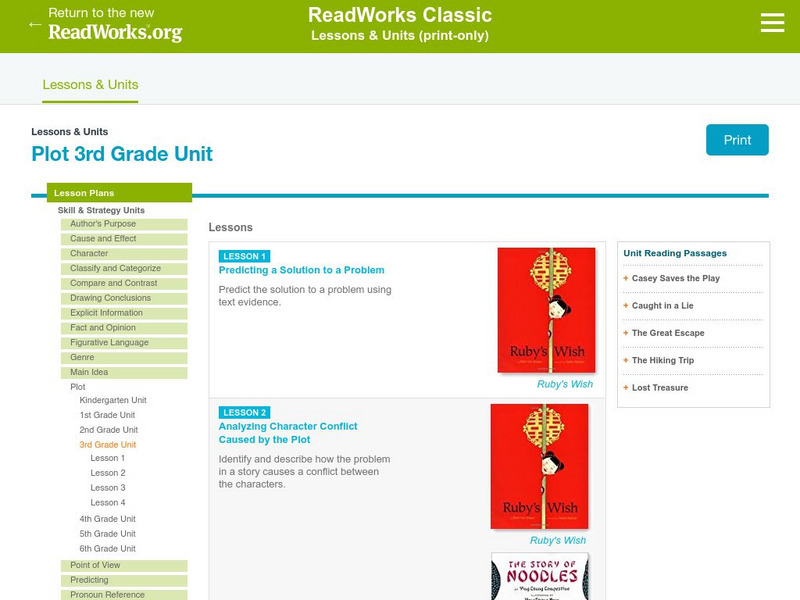HotChalk
Hot Chalk: Lesson Plans Page: Elements of a Story
This resource provides a lesson plan to teach students about the elements of a story.
Georgia Department of Education
Ga Virtual Learning: Ninth Literature and Composition: Short Stories
This lesson provides and introduction to a short story unit. It focuses the lessons and morals taught by short stories and the use of literary elements in fiction. I provides a list of essential questions.
PBS
Pbs Teachers: Story Writing With Arthur
This series of 12 downloadable activities teach students some basics of story writing, using books or videos from the PBS "Arthur" series as a springboard. Activities include creating story maps, asking questions about characters and...
Alabama Learning Exchange
Alex: Using a Fairy Tale to Teach the Elements of a Story
Students will hear and read different versions of a familiar fairy tale and identify what elements a story must have (character, plot, setting) for the story to be interesting and make sense. Using a Venn diagram, students will then...
Success Link
Success Link: Characters, Setting, Plot, Conclusion, and Summarizing a Story
This lesson plan offers a step-by-step procedure for teaching students how to identify story elements and to summarize a story. It explains how to use a "Who Am I" activity, as well as a linkage activity in identifying characters and...
Read Works
Read Works: Grade 2: Three Lesson Unit: Plot
[Free Registration/Login Required] A series of three lesson plans designed to teach students to identify story elements, retell a story using story elements, and see how characters affect the plot. Lessons are based on the books Dog...
AdLit
Ad lit.org: Classroom Strategies: Story Maps
Story Maps are used for teaching students to work with story structure for better comprehension. This technique uses visual representations to help students organize important elements of a story. Students learn to summarize the main...
Better Lesson
Better Lesson: Miss Nelson Is Missing Key Details
Where did Miss Nelson go? We look at the key details in the text to determine what is happening throughout the story. Students will locate and record key details about story elements (characters, setting, problem, solution, and theme) in...
TES Global
Blendspace: Rl5.3 Fables: Analyzing Theme, Story Elements, Text Structure
A six-part learning module with images, graphic organizers, videos, web links and more to teach students how to analyze theme, story elements, and text structure in fables.
Love To Know Media
Your Dictionary: Lesson Plans on Writing Short Stories
This lesson focuses on teacher preparation of lesson plans before attempting to teach pupils to write short stories. It includes questions to ask yourself, ideas for activities, and a sample lesson plan.
Other
Elements of Fiction
Simple discussion of the elements of fiction with a specific section devoted to Freytag's Pyramid (aka "basic plot structure"). A good place to start for gathering information on the structure of narrative.
Read Works
Read Works: Plot Kindergarten Unit: Retelling a Story
[Free Registration/Login Required] Teach retelling a story using plot elements through explanation, guided practice, and independent practice as students develop the skill. The text, My Red Balloon by Eve Bunting, must be provided by the...
Alabama Learning Exchange
Alex: Using Fairy Tales to Teach the Short Stories
Familiar fairy tales are used as guides to help middle schoolers analyze the elements of the short story: plot, theme, setting, point of view, and character.
ReadWriteThink
Read Write Think: Comics in the Classroom: Introduction to Narrative Structure
Contains plans for four lessons that teach students about narrative plot structures by using "The Three Little Pigs" fairy tale or a similar story. In addition to objectives and standards, this instructional plan contains links to sites...
Read Works
Read Works: Grade 2: Two Lesson Unit: Theme
[Free Registration/Login Required] A set of two lesson plans designed to teach young scholars to use story elements to identify theme and to match a given theme to a story. Lessons are based on the book Aesop's Fables by Jerry Pinkney....
ReadWriteThink
Read Write Think: Everyone Loves a Mystery a Genre Study
Contains plans for lessons that teach about the mystery story genre, including its story elements and vocabulary. In addition to objectives and standards, this instructional plan contains links to sites used in the lessons as well as...
Read Works
Read Works: Fourth Grade: Three Lesson Unit: Plot
[Free Registration/Login Required] A three-lesson unit focused on plot. Students identify and describe the elements of plot in the books Stone Soup by Jon J. Muth and Sweet Clara and the Freedom Quilt by Deborah Hopkinson. Then they...
ReadWriteThink
Read Write Think: Using Picture Books to Teach Plot Development and Confict Res.
Students read picture books to explore the concepts of plot development and conflict resolution. They first learn about the connections between reading and writing, and then revise their own writing. CCSS.ELA-Literacy.CCRA.R.4
ReadWriteThink
Read Write Think: Narrative Pyramid
A printable narrative pyramid where students can record information about a story including the character, setting, problem, main events, and solution. Directions on how to use this type of graphic organize as well as lists of teaching...
Better Lesson
Better Lesson: Don't Need Friends 2nd Read
In this lesson, students will engage in a second guided reading of "Don't Need Friends" by Carolyn Crimi. Students will compare and contrast elements within the story and elements between two stories.
ReadWriteThink
Read Write Think: Book Report Alternative: The Elements of Fiction
Analyzing a book takes the form of creating their own when students complete this activity. The stated goal is to help students "Read like writers." Includes link to a template for student use.
Read Works
Read Works: Plot 1st Grade Unit
[Free Registration/Login Required] A series of three lesson plans designed to teach students to identify problems and solutions in fiction text and to retell a story's problem and solution in sequence. Students learn to identify the plot...
Read Works
Read Works: Plot 3rd Grade Unit
[Free Registration/Login Required] A series of four lesson plans designed to teach students to predict problems and solutions in fiction text and to identify the relationship between problems and character conflicts within a story....
Varsity Tutors
Varsity Tutors: Web English Teacher: Dr. Seuss Lesson Plans
What is your favorite Dr. Seuss story? Web English Teacher may be offering you resources to teach it right here! Also contains links to biographical information.























